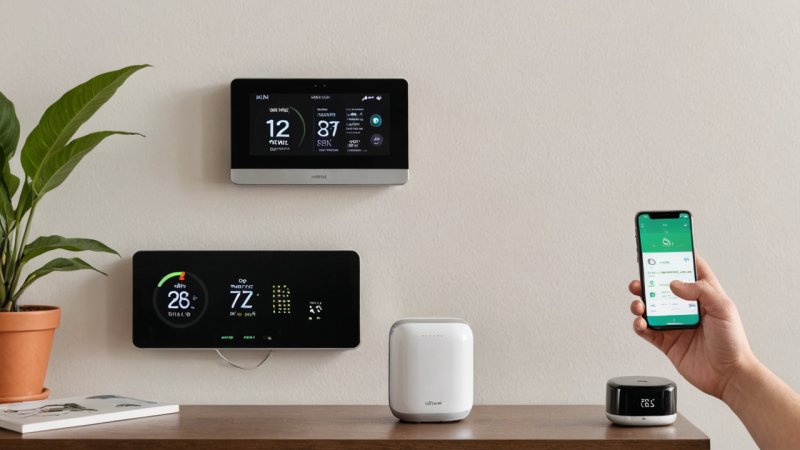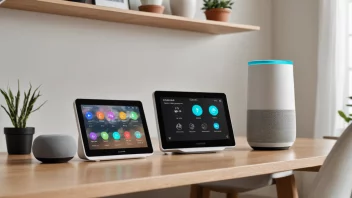In today's tech-savvy world, maintaining a healthy home environment has become a priority for many individuals. With the rise of smart home technology, two popular devices have emerged as essential tools for enhancing air quality: smart air quality monitors and smart thermostats. While both aim to improve the indoor environment, they do so in different ways. This article will compare these two smart devices, highlighting their pros, cons, and differences to help you decide which one is the best fit for your home.
Understanding Smart Air Quality Monitors
Smart air quality monitors are specialized devices designed to track the levels of various pollutants in your home, including particulate matter, volatile organic compounds (VOCs), carbon dioxide, and humidity. They provide real-time data and insights about your indoor air quality, allowing you to take necessary actions to improve it.
Pros of Smart Air Quality Monitors
- Real-time Monitoring: Provides instant feedback on air quality levels, allowing for immediate action if pollutant levels rise.
- Detailed Insights: Offers insights into specific pollutants, helping you understand what may be affecting your air quality.
- Alerts and Notifications: Sends alerts when air quality drops below acceptable levels, enabling proactive measures.
- Data Logging: Stores historical data for tracking air quality trends over time.
Cons of Smart Air Quality Monitors
- Cost: Can be relatively expensive compared to basic air quality indicators.
- Dependency on Other Devices: May require integration with other smart home devices for optimal performance.
- Limited Control: Monitors air quality but do not actively improve it without other devices.
Exploring Smart Thermostats
Smart thermostats, on the other hand, are designed primarily to control your home's heating and cooling systems. They learn your preferences over time and can adjust the temperature accordingly. Many modern smart thermostats also have features that can help improve air quality indirectly by optimizing HVAC performance.
Pros of Smart Thermostats
- Energy Efficiency: Helps reduce energy bills by optimizing heating and cooling schedules based on usage patterns.
- Remote Control: Allows users to adjust the temperature from anywhere using a smartphone app.
- Integration with HVAC Systems: Works closely with heating and cooling systems to maintain consistent air quality.
- Learning Capabilities: Adapts to user preferences, creating a comfortable environment automatically.
Cons of Smart Thermostats
- Not a Dedicated Air Quality Monitor: Primarily focuses on temperature control and may not provide detailed air quality data.
- Installation Complexity: May require professional installation, especially for older HVAC systems.
- Price: Can be more expensive than traditional thermostats without necessarily providing air quality improvements.
Key Differences Between Smart Air Quality Monitors and Smart Thermostats
| Feature | Smart Air Quality Monitors | Smart Thermostats |
|---|---|---|
| Primary Function | Monitor air quality levels | Control heating and cooling systems |
| Real-time Feedback | Yes | No (temperature-focused) |
| Pollutants Monitored | PM, VOCs, CO2, humidity | No direct monitoring |
| Energy Efficiency | No | Yes |
| Integration | Works with other devices | Works with HVAC systems |
Choosing the Right Device for Your Home
When deciding between a smart air quality monitor and a smart thermostat, consider the following factors:
- Your Primary Concern: If your main concern is understanding and improving air quality, a smart air quality monitor is the better choice. If you prioritize energy savings and temperature control, a smart thermostat will serve you well.
- Budget: Assess your budget for smart home devices. Smart air quality monitors can be pricey, but they provide valuable insights. Smart thermostats may also be costly, but they can save you money in the long run.
- Existing Smart Home Ecosystem: Consider how these devices will fit into your current smart home setup. If you already have HVAC systems integrated with smart technology, a thermostat may be more beneficial.
Conclusion
Both smart air quality monitors and smart thermostats offer unique benefits that can enhance your home environment. If improving air quality is your primary goal, investing in a smart air quality monitor is a wise choice. However, if you want to optimize energy usage while maintaining a comfortable living space, a smart thermostat may be the right fit. Ultimately, the best device for you will depend on your specific needs, lifestyle, and budget. By considering the differences outlined in this article, you can make an informed decision that leads to a healthier and more comfortable home.






